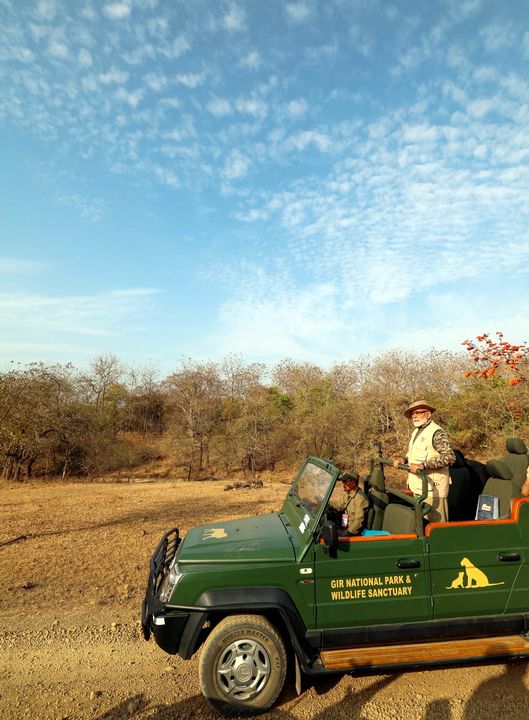Prime Minister Narendra Modi announced on Monday that the ambitious cheetah reintroduction project, currently focused at Madhya Pradesh's Kuno National Park, will soon expand to Gujarat's Banni Grasslands and Madhya Pradesh's Gandhisagar Sanctuary. The announcement was made during the seventh National Board of Wildlife (NBWL) meeting held at Sasan, Gujarat.
African cheetahs were first reintroduced to India through Kuno National Park in two phases—initially in September 2022, and later in February 2023. This groundbreaking conservation initiative represents the world's first intercontinental translocation of big cats.
While confirming the expansion, the government statement did not specify details regarding the number of cheetahs or the exact timelines for their introduction into the newly selected habitats.
Initially conceptualized by the Wildlife Trust of India in 2009, the "Action Plan for Reintroduction of Cheetah in India" aims to translocate approximately 50 cheetahs from African countries to various national parks in India over a span of five years.
With this expansion to Banni Grasslands and Gandhisagar Sanctuary, India aims to further bolster its wildlife conservation efforts, creating new ecosystems for the majestic African cheetah to thrive once again in the Indian landscape.
African cheetahs were first reintroduced to India through Kuno National Park in two phases—initially in September 2022, and later in February 2023. This groundbreaking conservation initiative represents the world's first intercontinental translocation of big cats.
While confirming the expansion, the government statement did not specify details regarding the number of cheetahs or the exact timelines for their introduction into the newly selected habitats.
Rich Biodiversity in Gujarat's Banni Grasslands
Banni Grasslands, a protected area spanning approximately 2,500 square kilometers in Gujarat’s Kutch district, offers an ideal habitat for diverse wildlife. Known primarily for its significant animal genetic resources, including the famed Banni buffalo, Kankrej cattle, sheep, goats, camels, and horses, Banni Grasslands also hosts more than 250 bird species, attracting both resident and migratory birds annually.Gandhisagar Sanctuary: Madhya Pradesh’s Diverse Habitat
Situated in the eastern part of Madhya Pradesh, Gandhisagar Sanctuary encompasses areas across Mandsaur and Neemuch districts. Commonly referred to as the Nimar region, this sanctuary lies near Rajasthan’s border and largely features dry terrain. Surrounding the Gandhisagar dam's backwaters, the sanctuary provides habitat for several rare wildlife species such as wild dogs (dholes), chinkaras, leopards, otters, and crocodiles.Challenges and Successes of the Cheetah Project
The cheetah reintroduction in India faced several challenges, as seven adult African cheetahs—three females and four males—have died between March 2023 and January 2024, including four deaths attributed to septicemia. Despite these setbacks, the project witnessed notable success, with 17 cubs born in India, out of which 12 have survived.Initially conceptualized by the Wildlife Trust of India in 2009, the "Action Plan for Reintroduction of Cheetah in India" aims to translocate approximately 50 cheetahs from African countries to various national parks in India over a span of five years.
With this expansion to Banni Grasslands and Gandhisagar Sanctuary, India aims to further bolster its wildlife conservation efforts, creating new ecosystems for the majestic African cheetah to thrive once again in the Indian landscape.
Last updated by a enewsx:

